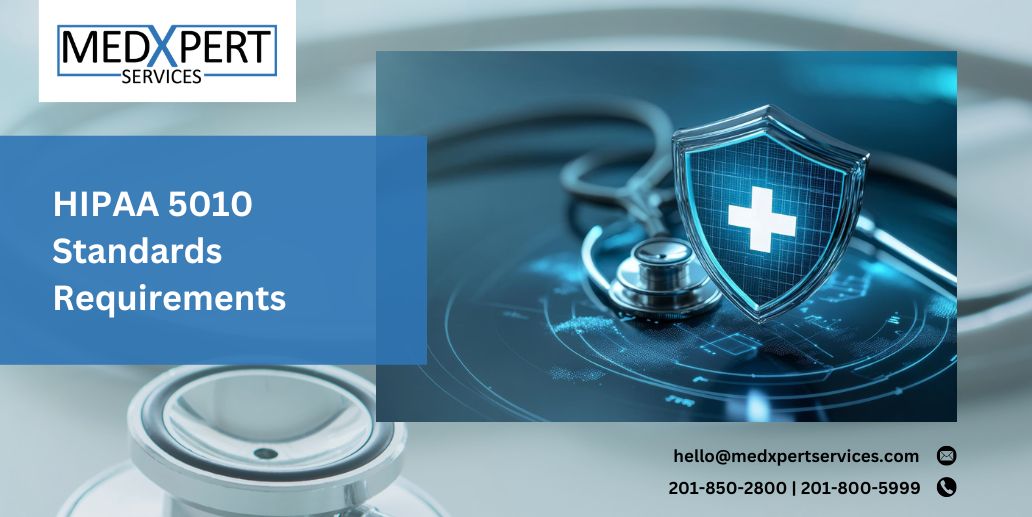Starting January 1, 2012, healthcare providers must use electronic systems to submit Medicare claims, adhering to the X12 Version 5010 and NCPDP Version D.0 standards. This step is crucial for modernizing the process and setting the stage for the future adoption of ICD-10 coding standards.
Under HIPAA rules, healthcare entities must conduct electronic transactions using specific standards to ensure consistency and security. The required standard, known as ASC X12 Version 5010, dictates exactly how information must be formatted and exchanged in the healthcare industry.
What is HIPAA 5010?
HIPAA 5010 standards refer to the updated requirements for the electronic transmission of healthcare transactions, such as eligibility checks, claim status inquiries, and remittances. These standards are crucial for enhancing the efficiency and accuracy of data exchange within the healthcare system.
The adoption of the 5010 format ensures that all electronic transactions meet consistent regulatory requirements. This compliance supports the transition to the ICD-10 coding system, allowing for more detailed and precise medical documentation and billing practices.
For example, when a healthcare provider submits an electronic claim for a patient’s knee surgery, the 5010 format precisely details the surgery type, diagnosis, and treatment, ensuring standardized and clear communication between medical entities.
Functionality of HIPAA 5010 Standards in Modern Healthcare
HIPAA 5010 transaction standards ensure all electronic healthcare transactions adhere to a unified format. This protocol, required under Title II of HIPAA, compels healthcare providers and billers to use ASC X12 Version 5010 for submitting claims electronically. The standardized format simplifies the recognition and processing of claims across various healthcare systems, enhancing the efficiency and accuracy of data exchanges.
Key Features of HIPAA 5010 Standards:
- Uniformity: All transactions maintain a consistent appearance to streamline processing.
- Consistency: Each procedure code across transactions is identical, reducing discrepancies in healthcare billing.
- Detailed Coding: Specific codes within each transaction allow for accurate representation of diverse medical services and treatments.
Adopting HIPAA 5010 standards helps minimize errors and improve the speed of healthcare billing. The detailed coding system ensures each service or treatment is accurately recorded and billed, leading to better management of patient data and financial transactions within the healthcare system.
Overview of HIPAA 5010 Compliance and Standardized Transaction Rules
HIPAA 5010 standards define the requirements for electronic data interchange in healthcare, ensuring that transactions like claims, eligibility checks, and referrals follow uniform formats. These standards aim to improve the consistency and efficiency of data exchanges across healthcare systems, reducing errors and administrative burdens. By adhering to these protocols, providers, payers, and other entities can communicate more effectively, ensuring accurate and timely processing of healthcare transactions.
Different types of transactions have specific formats, such as ASC X12N 837 Version 5010 for medical claims and ASC X12N 270/271 Version 5010 for eligibility checks, with mandatory compliance dates starting in 2012.
For example, eligibility and benefits verification requires a specific format and complete adherence to rules by 2013. These standardized approaches streamline the exchange of information, helping to create a more connected and efficient healthcare environment.
Standard Code Sets for Medical Documentation
HIPAA 5010 also incorporates specific coding systems to ensure consistency in medical documentation and billing, promoting accuracy and clarity in healthcare transactions.
| Documentation Area | Coding System |
| Diagnosis Coding | ICD-10-CM (10th Edition, Clinical Modification) |
| Inpatient Procedures | ICD-10-PCS (Procedure Coding System) |
| Outpatient and Physician Services | CPT (Current Procedural Terminology) |
| Medical Supplies and Additional Services | HCPCS (Healthcare Common Procedure Coding System) |
| Dental Services | CDT (Code on Dental Procedures and Nomenclature) |
These code sets enable precise recording and billing of medical services, enhancing the overall reliability and efficiency of healthcare data exchanges.
Essential Steps for HIPAA 5010 Compliance
To comply with HIPAA 5010 standards, healthcare providers must ensure that their electronic transactions are accurate and consistent. This includes using the correct billing provider, verifying addresses, and maintaining uniform use of the National Provider Identifier (NPI). Following these guidelines reduces errors and improves the efficiency of claim processing.
Key Compliance Actions
- Confirm billing provider details
- Use complete street addresses
- Ensure consistent NPI usage
- Report anesthesia in minutes
- Include diagnosis codes on claims
- Add billing provider’s tax ID
Following these steps helps healthcare providers stay compliant with HIPAA 5010, ensuring smooth and efficient transactions. Regularly reviewing your processes can further minimize errors and enhance data accuracy.
Final Thoughts
HIPAA 5010 standards are crucial for enhancing the accuracy and efficiency of electronic healthcare transactions. By implementing these standards, providers can minimize errors, ensure compliance, and improve the overall flow of information between entities. This transition supports more detailed medical documentation and better billing practices, aligning with future healthcare needs.
To maintain compliance, healthcare providers should consistently review their processes, verify the accuracy of their data, and make necessary adjustments. Regular validation checks can help ensure that all transactions adhere to the latest standards, fostering a more streamlined and effective healthcare system that benefits both providers and patients.






